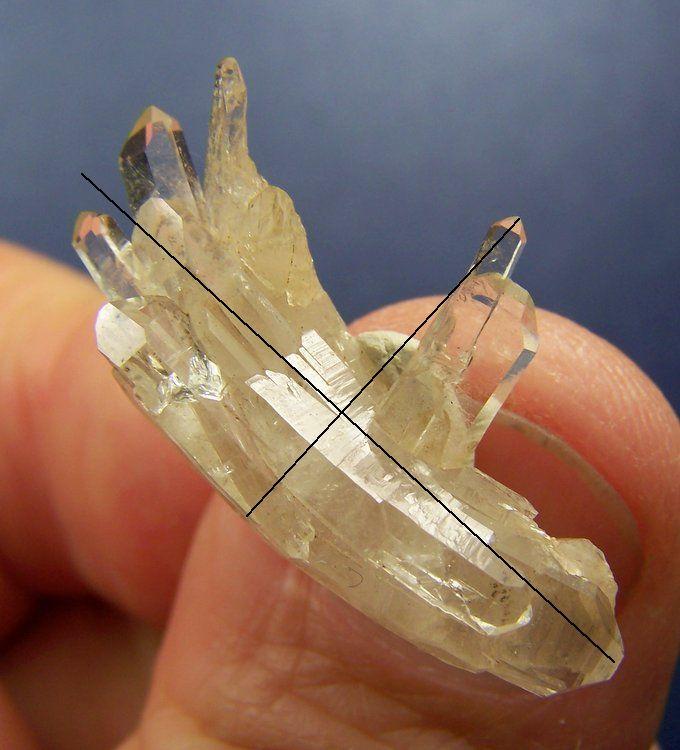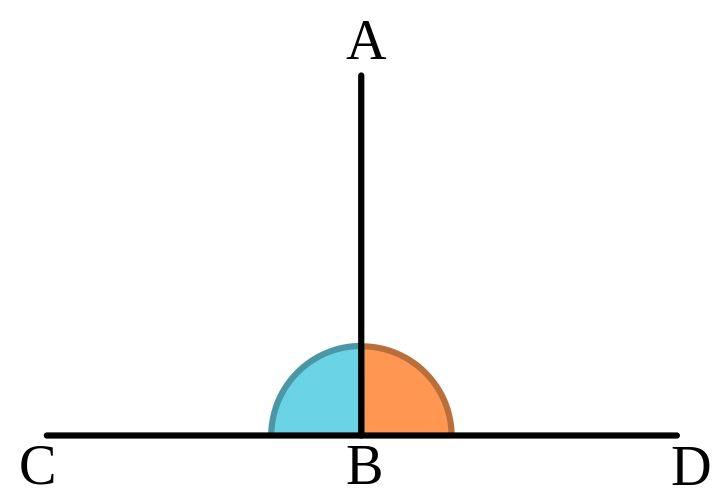| View previous topic :: View next topic |
| Author |
Message |
Pierre Joubert
Joined: 09 Mar 2012
Posts: 1605
Location: Western Cape



|
 Posted: Feb 02, 2013 13:23 Post subject: Measuring mineral specimens Posted: Feb 02, 2013 13:23 Post subject: Measuring mineral specimens |
|
|
We have been taught to take the length, width and depth of a specimen. This might sound quite simple, but as most of us know, very few mineral specimens have a simple, rectangular type shape. Complicated clusters, sceptres, bent quartz to mention just a few. I would welcome your input (how do you measure your specimens?)
| Description: |
Quartz
Western Cape, South Africa
thumb for size |
|
| Viewed: |
24290 Time(s) |

|
_________________
Pierre Joubert
'The tree of silence bears the fruit of peace. ' |
|
| Back to top |
|
 |
chris
Site Admin

Joined: 12 Jul 2007
Posts: 538
Location: Grenoble



|
 Posted: Feb 02, 2013 14:25 Post subject: Re: Measuring mineral specimens Posted: Feb 02, 2013 14:25 Post subject: Re: Measuring mineral specimens |
|
|
Hello Pierre,
I usually take the largest of each dimension using a measuring tape. This is not a precise technique, but it is just good enough for me. I never dared to use a caliper as a mishandling might damage the measured specimen.
Hope it helps.
Christophe
|
|
| Back to top |
|
 |
Pierre Joubert
Joined: 09 Mar 2012
Posts: 1605
Location: Western Cape



|
 Posted: Feb 02, 2013 14:31 Post subject: Re: Measuring mineral specimens Posted: Feb 02, 2013 14:31 Post subject: Re: Measuring mineral specimens |
|
|
| chris wrote: | Hello Pierre,
I usually take the largest of each dimension using a measuring tape. This is not a precise technique, but it is just good enough for me. I never dared to use a caliper as a mishandling might damage the measured specimen.
Hope it helps.
Christophe |
Hi Chris. We do use a caliper, but a plastic one for obvious reasons. Some specimens are too large, and such, we measure with a plastic ruler or tape measure.
_________________
Pierre Joubert
'The tree of silence bears the fruit of peace. ' |
|
| Back to top |
|
 |
GneissWare

Joined: 07 Mar 2008
Posts: 1287
Location: California



|
 Posted: Feb 02, 2013 15:22 Post subject: Re: Measuring mineral specimens Posted: Feb 02, 2013 15:22 Post subject: Re: Measuring mineral specimens |
|
|
I take the largest dimension first and then try to pick orthogonal lines from there. The goal is to define the dimensions of the rectangular solid they would occupy, if they were indeed a rectangular shape.
Others, like Rock Currier don't measure but instead weigh the specimen, as I understand.
|
|
| Back to top |
|
 |
Pierre Joubert
Joined: 09 Mar 2012
Posts: 1605
Location: Western Cape



|
 Posted: Feb 02, 2013 16:10 Post subject: Re: Measuring mineral specimens Posted: Feb 02, 2013 16:10 Post subject: Re: Measuring mineral specimens |
|
|
| GneissWare wrote: | I take the largest dimension first and then try to pick orthogonal lines from there. The goal is to define the dimensions of the rectangular solid they would occupy, if they were indeed a rectangular shape.
Others, like Rock Currier don't measure but instead weigh the specimen, as I understand. |
Hi GneissWare. By 'orthogonal lines' I understand that you mean 90 gegrees. The problem wiith just supplying weight, is that it is not easy to visualize the size of the specimen.
| Description: |
|
| Viewed: |
24186 Time(s) |

|
_________________
Pierre Joubert
'The tree of silence bears the fruit of peace. ' |
|
| Back to top |
|
 |
Woody Thompson
Joined: 08 Mar 2010
Posts: 60
Location: Maine


|
 Posted: Feb 02, 2013 17:15 Post subject: Re: Measuring mineral specimens Posted: Feb 02, 2013 17:15 Post subject: Re: Measuring mineral specimens |
|
|
For personal cataloging,I start by measuring the long axis of the specimen, but from side to side, and not the longest possible diagonal (corner to corner). Then I measure the intermediate and short dimensions at right angles to the long axis.
This is done with a ruler, eyeballed to the nearest 1 or 2 mm. Oddly shaped specimens are more difficult, but visually projecting the end points to the line of the ruler gives me results that are close enough.
When dealers price costly specimens "by the mm", I imagine they use the longest possible diagonals!?
This is a great discussion thread. I've never seen any published standards for giving specimen measurements, and often wonder what people use for conventions.
_________________
Woody Thompson
Maine Geological Survey |
|
| Back to top |
|
 |
marvsT/Nminerals
Joined: 06 Nov 2008
Posts: 68
Location: Juda, Wisconsin


|
 Posted: Feb 02, 2013 17:22 Post subject: Re: Measuring mineral specimens Posted: Feb 02, 2013 17:22 Post subject: Re: Measuring mineral specimens |
|
|
Hello Pierre, I like the method GneissWare uses with provision that the first dimension be across the display face even if the depth be greater. Marv
_________________
Member: Badger Lapidary and Geological Society
Great things can be found in small packages! |
|
| Back to top |
|
 |
Jim Robison
Joined: 17 Nov 2010
Posts: 55


|
 Posted: Feb 02, 2013 19:06 Post subject: Re: Measuring mineral specimens Posted: Feb 02, 2013 19:06 Post subject: Re: Measuring mineral specimens |
|
|
Time to be the grumpy old man. As an engineer I am often frustrated when people have a misunderstanding about the difference between accuracy and precision. The latter is often cited to ridiculous extremes to prove how good the measurement must have been. Accuracy means 'how right did you get the number' and precision represents how much detail you provide in the answer, WHETHER OR NOT IT IS CORRECT.
It is hard enough deciding specimen orientation.. Do you use longest possible numbers, or take an average of the three primary directions? When you report a number, consider how small changes in direction result in major differences in "size.". One pet peeve is those who measure the diagonal on a cube or rhomb instead of edge dimensions. The former vastly overstates the true size..
And who can take a view of a skewed crystal in a photo, or a rock in hand, and report its size as exactly 14.55 mm? It is about 14, or generously 14.5 mm at best. I've seen some reported to three digits. Enough already, get it close and consider it right.
|
|
| Back to top |
|
 |
cascaillou
Joined: 27 Nov 2011
Posts: 263


|
 Posted: Feb 02, 2013 19:36 Post subject: Re: Measuring mineral specimens Posted: Feb 02, 2013 19:36 Post subject: Re: Measuring mineral specimens |
|
|
if the specimen has an obvious rectangular orientation (which is the case of the quartz pictured previously), I would just stick to it.
However, if the specimen has a less 'obvious' shape, I would proceed as follows (measuring A then B then C):
A =Longuest axis of the specimen
B= Longuest axis perpendicular to the A axis
C= Longuest axis perpendicular to the plane formed by axis A and axis B
I'd say that mentioning weight only makes sense for cut stones, or loose gem rough (that has no matrix and no associated minerals).
|
|
| Back to top |
|
 |
GneissWare

Joined: 07 Mar 2008
Posts: 1287
Location: California



|
 Posted: Feb 02, 2013 20:11 Post subject: Re: Measuring mineral specimens Posted: Feb 02, 2013 20:11 Post subject: Re: Measuring mineral specimens |
|
|
| cascaillou wrote: | I would proceed as follows (measuring A then B then C):
A =Longuest axis of the specimen
B= Longuest axis perpendicular to the A axis
C= Longuest axis perpendicular to the plane formed by axis A and axis B
I'd say that mentioning weight only makes sense for cut gemstones, or loose gem rough (that has no matrix and no associated minerals). |
That is exactly what I meant by orthogonal measurements based on the longest dimension first.
As for weight, I don't measure it for specimens, but as I said Rock Currier does, and that was a request by several users for enhancements on my mineral cataloging software, so I guess others do use specimen weight.
|
|
| Back to top |
|
 |
cascaillou
Joined: 27 Nov 2011
Posts: 263


|
 Posted: Feb 02, 2013 20:14 Post subject: Re: Measuring mineral specimens Posted: Feb 02, 2013 20:14 Post subject: Re: Measuring mineral specimens |
|
|
| I'll add that when I said that "C is the longest axis perpendicular to the plane formed by axis A and axis B" that doesn't mean that the C axis will necessarly cut any of the two other axis.
|
|
| Back to top |
|
 |
Darryl
Joined: 12 Oct 2009
Posts: 32
Location: Amarillo, Texas


|
 Posted: Feb 02, 2013 20:55 Post subject: Re: Measuring mineral specimens Posted: Feb 02, 2013 20:55 Post subject: Re: Measuring mineral specimens |
|
|
Three cheers for JIm. The difference between accuracy and precision is important when discussing measurements. A stopped digita watch is the ultimate in precision meaning that the measurement reading is always the same to however many significant digits the disply shows - but it is rarely gives the correct time. The old style analogue watches were generally pretty acurate but rarely would two people agree on the corrct time onewas giving closer than +/- 1 minute (unless of course it had a big face with the minutes marked off.
Measuring the dimenstions of a crytal with a jagged base using a micrometer will get you an anwer to the nearest thousandth or maybe even ten thousandth of an inch but if the base is irregular by significant fractions of an inch - what is the point.
Overall I commend everyone on their efforts to convey usefull information about their samples. This just happened to be one of my pet peeves as well. And I am a geologist, not an engineer.
I agree - get it close and call it good enough.
Anyone ever wonder why merchants bother with cents on the price tag of items costing more than $10? Seems kind of pointless to me. Too much precision - no USEFULL information. The difference between $10 and $15 is significant, whether but if one item is $10.02 and another is $10.05 is that significant. Likewise is a mineral whose lengthis stated to be 3.54 cm really different from one that measures 3.55 cm? 3.5 cm seems cloes enough for me.
|
|
| Back to top |
|
 |
keldjarn
Joined: 18 Feb 2008
Posts: 157



|
 Posted: Feb 03, 2013 03:52 Post subject: Re: Measuring mineral specimens Posted: Feb 03, 2013 03:52 Post subject: Re: Measuring mineral specimens |
|
|
I will second Jim and consider that any measurement of mineral specimens to be difficult to interpret based only on the accuracy or precision of the physical measurement. As with other measurements the key issue is how th data should be used. IF it is important to know that the specimen may fit into a box or fixed space, using the maximum dimension and measuring in 2 other directions (perpendicularly) makes sense. But since mineral collecting is also about the visual appreciation of specimens and crystals, it can be argued that the form and presentation of th specimen should influence the way it is measured. When entering information about sizes of the specimens in my collection, I usually select the longest dimension related to the displayable part of the specimen as a basis. But I do not bother to measure more accurate than 5 mm for specimens larger than 1 cm. Thus 1,2 cm makes 1 cm and 1,3 cm makes 1,5 cm etc. The handfull of smaller specimens/MM in the collection I measure as close to the correct mm as possible.
This suites my needs since I am not measuring the specimens for sale but just for registration purposes.
Knut
|
|
| Back to top |
|
 |
Pierre Joubert
Joined: 09 Mar 2012
Posts: 1605
Location: Western Cape



|
 Posted: Feb 03, 2013 06:40 Post subject: Re: Measuring mineral specimens Posted: Feb 03, 2013 06:40 Post subject: Re: Measuring mineral specimens |
|
|
Thank you for all the wonderful input. I suppose, the reason why I would want the measurements to be as accurate as reasonably possible, especially small specimens, is if I sell a specimen, I do not want the recipient to re-measure and find the specimen to be of a different size than spesified. It is critically important, when displaying a specimen on internet, to give as good as reasonably possible, measurements of the specimen. A small specimen can be 'blown up' by macro photography, looking like a large specimen, and spesifications are absolutely vital. I like to include the weight with the other dimensions, to give an even better picture.
_________________
Pierre Joubert
'The tree of silence bears the fruit of peace. ' |
|
| Back to top |
|
 |
keith
Joined: 26 May 2009
Posts: 32


|
 Posted: Feb 03, 2013 07:34 Post subject: Re: Measuring mineral specimens Posted: Feb 03, 2013 07:34 Post subject: Re: Measuring mineral specimens |
|
|
Hi
I photograph my specimen first then record the dimensions on my mineral records as displayed in the photo.
The photo forms part of the mineral catalogue.
I always record measurements in the same order: horizontal, then vertical then depth.
That way there is no confusion as to what is being measured.
I sometimes add the dimensions of the largest xl and the dimensions of any major associated minerals
Sizes are measured using a plastic caliper or plastic rule placed flat on a flat surface
Cheers
_________________
Keith |
|
| Back to top |
|
 |
|





